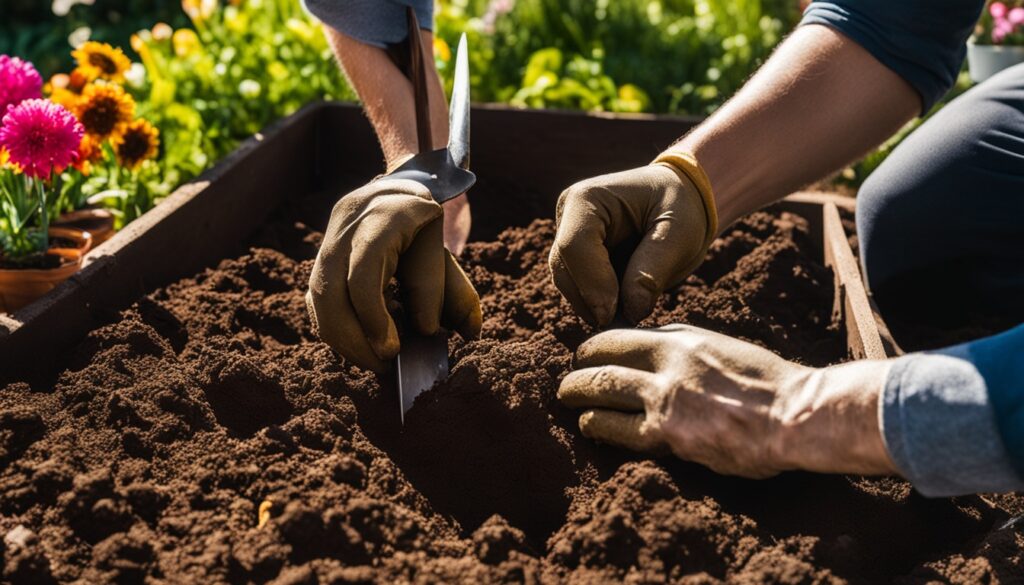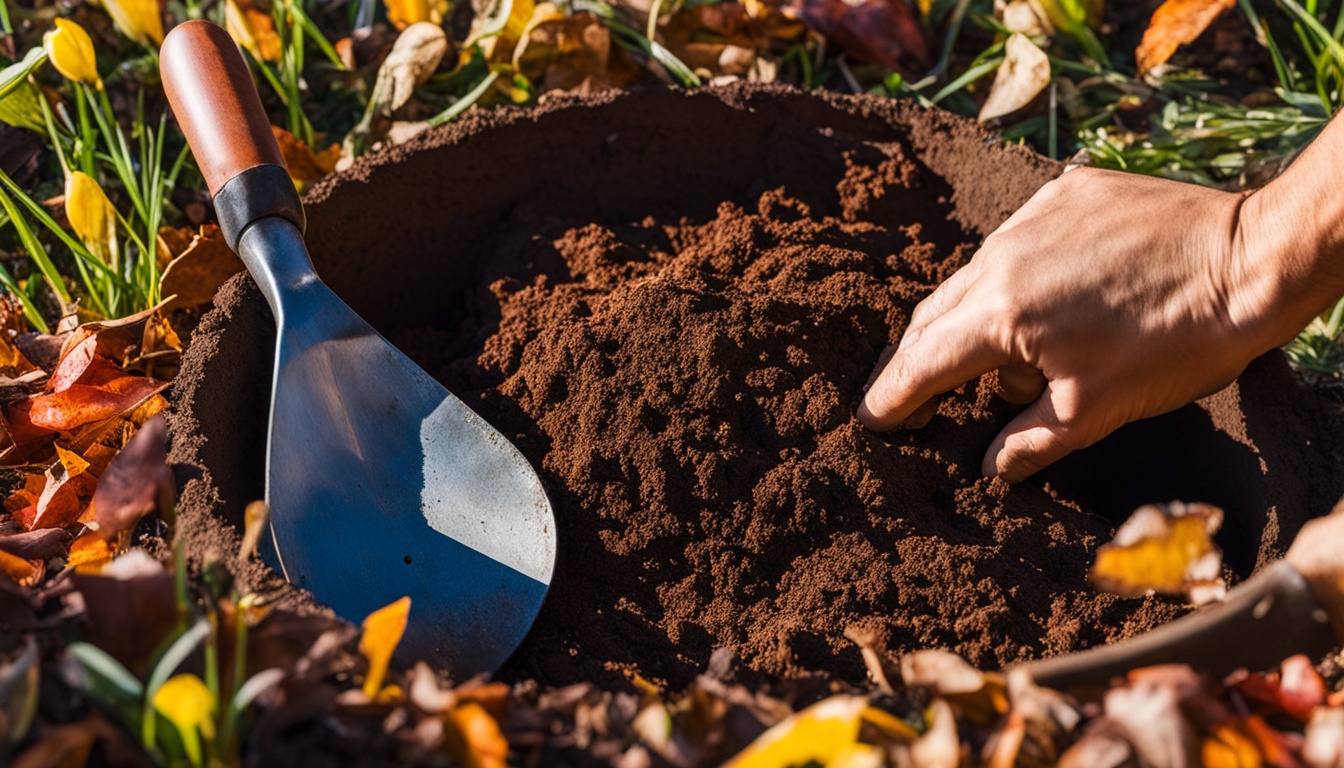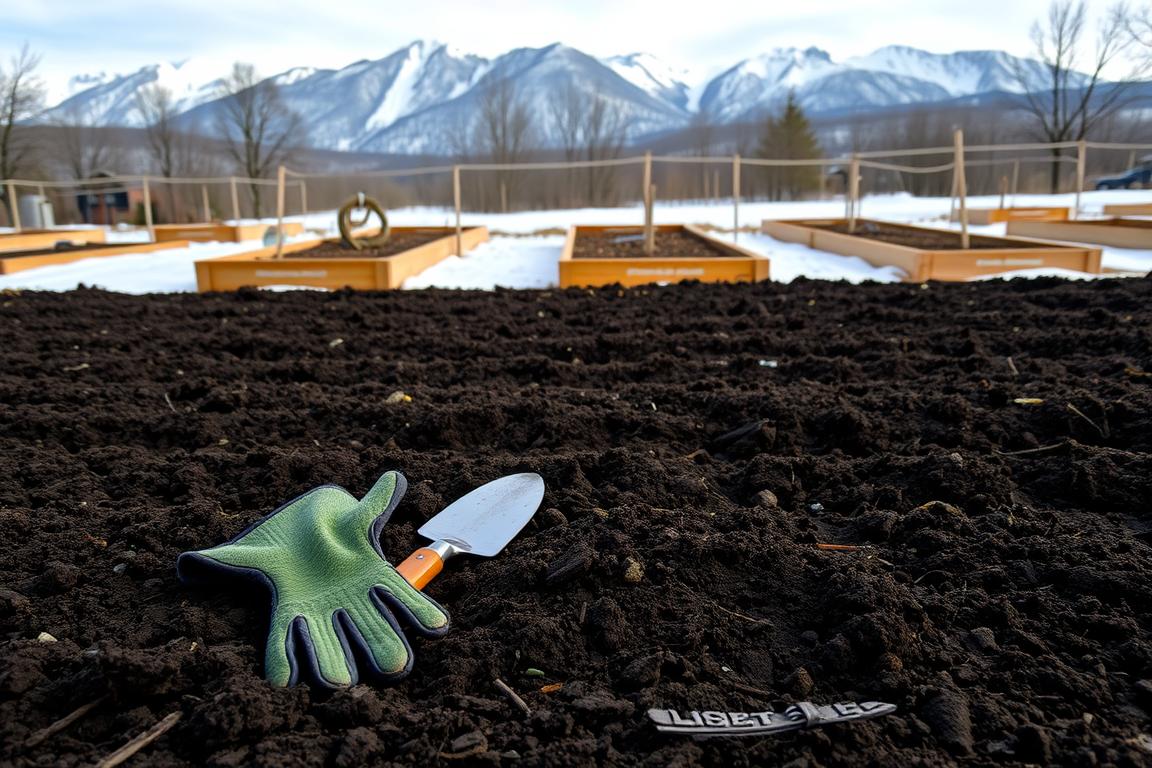As summer ends and autumn’s cool air comes, it’s the best time to plan for a beautiful spring garden. Planting fall bulbs is an easy way to get tulips, daffodils, and other spring flowers ready. By planting these bulbs before the first frost, you’ll have a garden full of colors and textures in spring.
This guide will share tips and techniques for picking, preparing, and planting fall bulbs. You’ll learn how to choose the right bulbs and make your spring garden exciting. From chilling requirements to deer-resistant bulbs, we’ve got you covered.
Key Takeaways
- Planting fall bulbs is a great way to create a stunning spring garden
- Selecting the right bulb varieties and understanding their chilling requirements is crucial
- Proper soil preparation and planting depth are essential for healthy, vibrant blooms
- Incorporating deer-resistant bulbs can help protect your garden from unwanted visitors
- Naturalizing bulbs can create a beautiful, low-maintenance display year after year
Common Mistakes to Avoid When Planting Bulbs
As the cooler months come, gardeners look forward to the spring flowers. But, to get those blooms right, avoid some common mistakes. Here are key tips for planting bulbs successfully.
Cheap Bulbs Are No Bargain
It might seem smart to buy cheap bulbs, but think again. These bulbs often don’t produce many flowers and can rot easily. This means you’ll get fewer blooms in the spring. Spend a bit more on quality bulbs from trusted sellers for a beautiful garden.
Plant Pointy End Up
When you plant bulbs, make sure they’re facing the right way. The pointy end should be up, and the flat end down. If you plant them wrong, the flowers might not grow right or look odd.
Keep Track of Where You Plant
It’s easy to forget where you planted your bulbs, especially if they’re spread out. Mark the spots with perennials or labels. This helps you remember where they are and keeps you from digging them up later.
“Proper planting depth and bulb spacing are crucial for the best spring blooming display.”
Remember these tips and you’ll have a garden full of beautiful, naturalizing bulbs and deer resistant bulbs next spring.
Planting Fall Bulbs: Tips and Techniques
Getting your garden ready for spring starts with the right way to plant fall bulbs. You need to know the best depth and when to plant for great results. These steps help make sure your bulbs grow well and bloom beautifully in spring.
Measure With Your Hori Hori Knife
A hori hori knife is a must-have for gardeners. It’s a special knife with depth marks. This tool helps you plant bulbs at the right depth, usually 6-8 inches deep for big bulbs and 3-4 inches for small ones. This way, your bulbs grow strong and bloom brightly in spring.
Ask Nature When to Plant
Planting fall bulbs at the right time is key. Don’t just look at a calendar. Wait until nights are between 40-50°F. This lets bulbs grow strong roots before winter, preparing them for spring blooms.
If You Can't Dig Down, Cover Up
Sometimes, the soil is too hard to dig deeply. Don’t worry, there’s another way. Put the bulbs on top of the soil and cover them with 6-8 inches of good compost or soil mix. This layer protects the bulbs and helps them grow, even without deep planting.

Follow these tips for planting fall bulbs, and you’ll have a beautiful spring garden. Your bulbs will bloom vibrantly, filling your garden with color and joy.
Choosing the Right Bulbs
When picking fall bulbs, think about deer resistance and how they spread over time. Choosing the right bulb varieties makes for a beautiful, easy spring garden. This will make you happy every year.
These Bulbs Don't Appeal to Deer
Deer resistant bulbs like daffodils and alliums are great for areas with lots of deer. These bulbs have special compounds that deer don’t like. This means your flowers will bloom in spring without deer eating them. Using different flower bulbs that deer don’t like can make your garden colorful and safe from deer.
Some Bulbs Will Do the Work for You
For a garden that needs little care, try naturalizing bulbs like crocus, grape hyacinth, and snowdrops. These bulbs spread on their own, making a beautiful spring-blooming area with little work. They’re perfect for creating areas that look great with no effort from you.
By picking deer resistant and self-sowing bulb varieties, you get a beautiful, easy spring garden. This will make you happy for many seasons.

Chilling Requirements for Bulbs
To get your bulbs to bloom beautifully in spring, you must chill them first. Bulbs like tulips, daffodils, and hyacinths need cold temperatures to wake up from their sleep. This cold period, called “chilling,” helps them get ready for spring.
Pre-chilling Bulbs in Warm Climates
If you live in a warm area, you might need to chill your bulbs before planting. In places with mild winters, the ground doesn’t get cold enough for bulbs to chill for 11-15 weeks. So, you can chill them in the fridge before planting.
This way, you can make sure they get the cold they need. By doing this, you help your bulbs bloom well in spring.
It’s important to follow the right chilling steps, no matter where you live. With some planning, you can enjoy a beautiful spring with your favorite flowers.
FAQ
Q: What are some common mistakes to avoid when planting fall bulbs?
A: Don’t buy cheap or discounted bulbs as they might not bloom well and can rot easily. Make sure to plant bulbs with the pointy end facing up. Also, keep a record of where you plant them so you won’t forget.
Q: How can I ensure I plant fall bulbs at the right depth?
A: Use a hori hori knife with ruler markings to plant bulbs at the correct depth. Plant them when the weather is just right in the fall, with nighttime temperatures between 40-50°F. This can help them grow better.
Q: What types of fall bulbs are resistant to deer and able to naturalize over time?
A: Daffodils, alliums, and some other bulbs are not liked by deer. Crocus, grape hyacinth, and snowdrops are great for spreading on their own over time.
Q: How do I ensure my fall bulbs will bloom properly in the spring?
A: Bulbs need cold temperatures, or “chilling,” to bloom in the spring. If you live in a warm area, pre-chill your bulbs in the fridge for 11-15 weeks before planting. This depends on the type of bulb.






